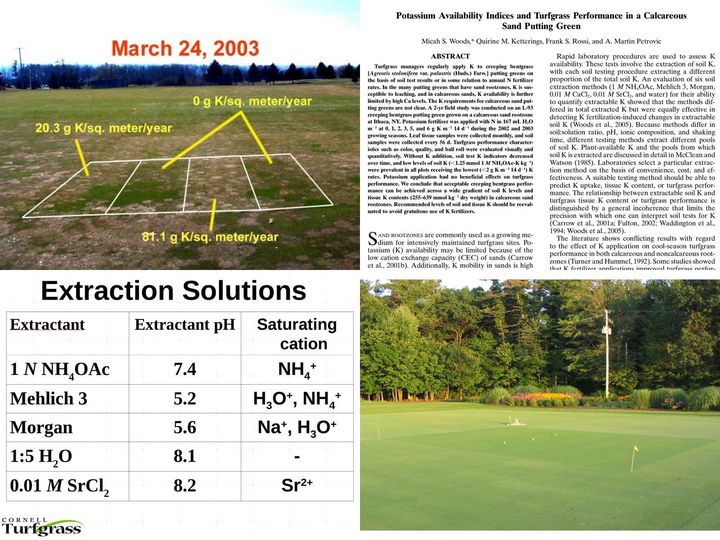Potassium availability indices and turfgrass performance in a calcareous sand putting green

Abstract
Turfgrass managers regularly apply K to creeping bentgrass [Agrostis stolonifera var. palustris (Huds.) Farw.] putting greens on the basis of soil test results or in some relation to annual N fertilizer rates. In the many putting greens that have sand rootzones, K is susceptible to leaching, and in calcareous sands, K availability is further limited by high Ca levels. The K requirements for calcareous sand putting greens are not clear. A 2-yr field study was conducted on an L-93 creeping bentgrass putting green grown on a calcareous sand rootzone at Ithaca, NY. Potassium fertilizer was applied with N in 167 mL H2O m-2 at 0, 1, 2, 3, 5, and 6 g K m-2 14 d-1 during the 2002 and 2003 growing seasons. Leaf tissue samples were collected monthly, and soil samples were collected every 56 d. Turfgrass performance characteristics such as color, quality, and ball roll were evaluated visually and quantitatively. Without K addition, soil test K indicators decreased over time, and low levels of soil K (<1.25 mmol 1 M NH4OAc-K kg-1 ) were prevalent in all plots receiving the lowest (<2 g K m-2 14 d-1) K rates. Potassium application had no beneficial effects on turfgrass performance. We conclude that acceptable creeping bentgrass performance can be achieved across a wide gradient of soil K levels and tissue K contents (255–639 mmol kg-1 dry weight) in calcareous sand rootzones. Recommended levels of soil and tissue K should be reevaluated to avoid gratuitous use of K fertilizers.